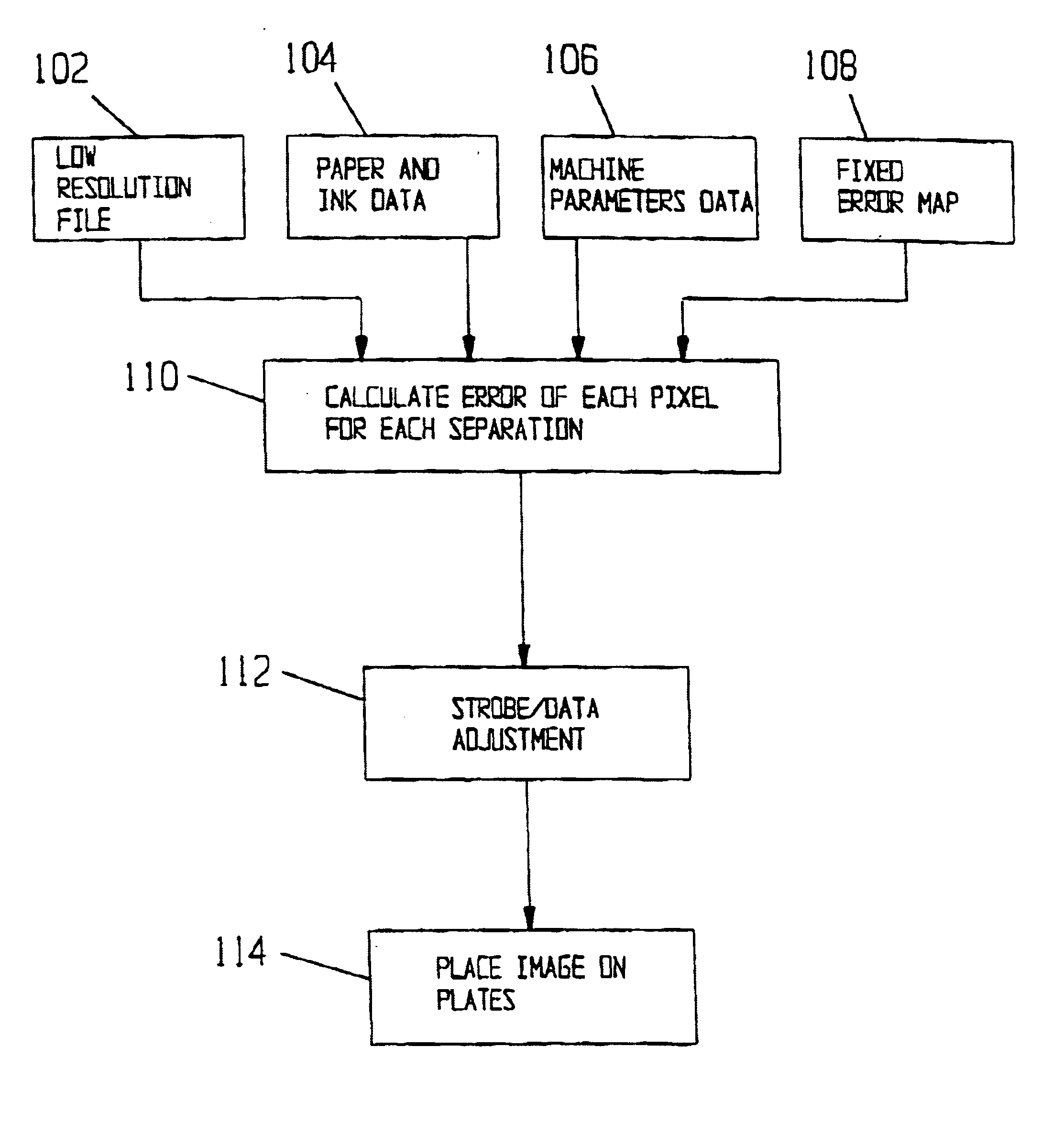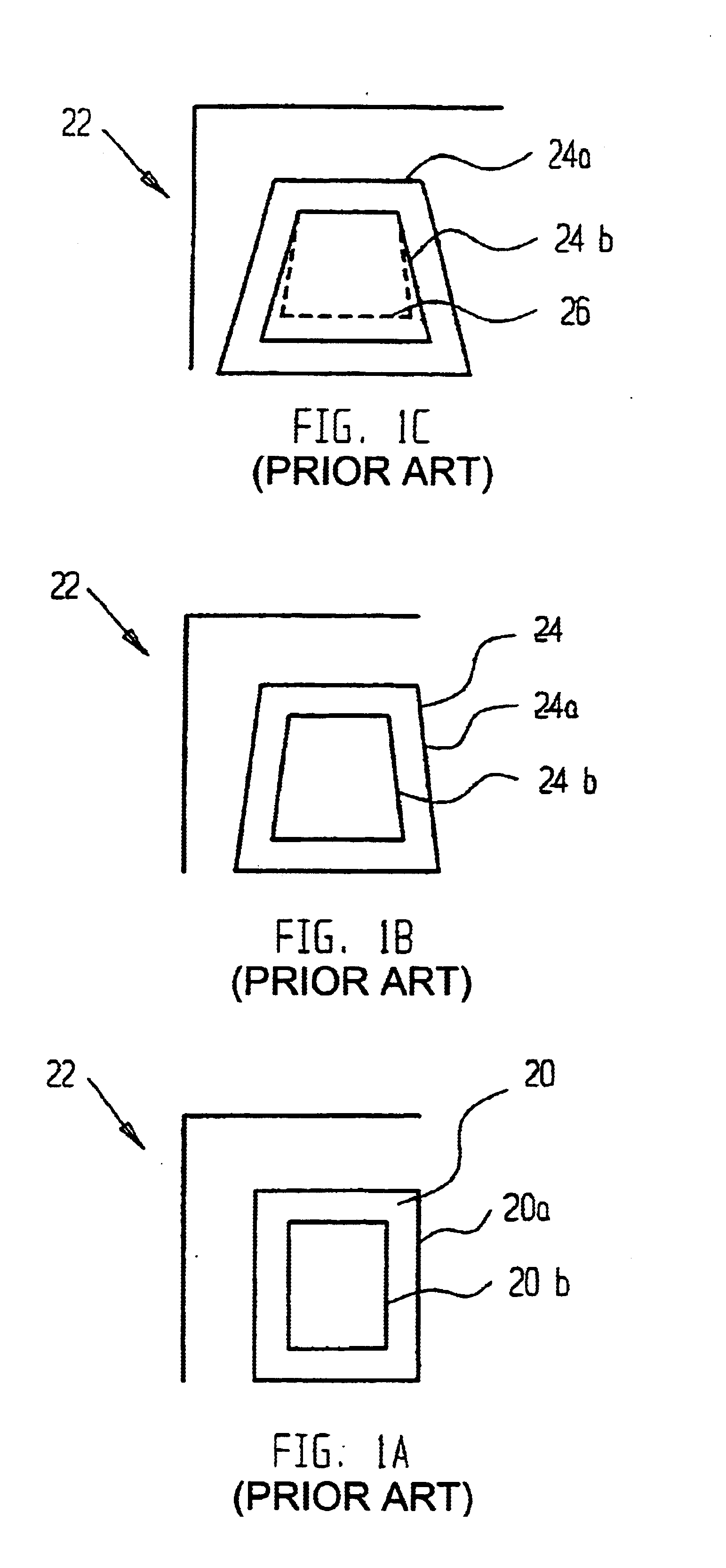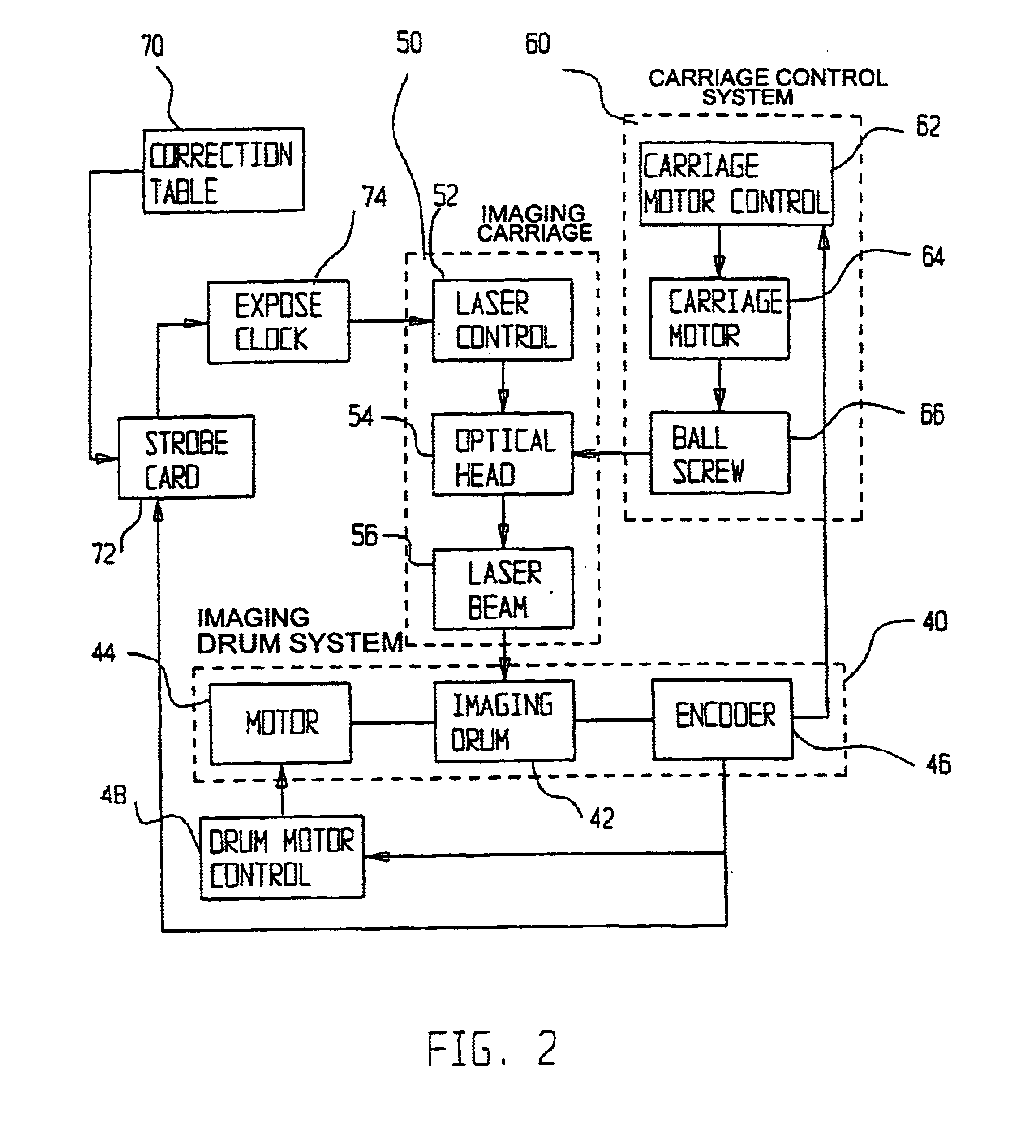Digital offset printing registration
a digital offset and printing registration technology, applied in the field of lithography, can solve problems such as printing press mechanism errors, misalignment and scale errors, and fixed errors
- Summary
- Abstract
- Description
- Claims
- Application Information
AI Technical Summary
Benefits of technology
Problems solved by technology
Method used
Image
Examples
Embodiment Construction
[0022]The present invention is operable with printing presses, typically digital offset printing presses. For example, one such digital printing press, that uses printing plates is commercially available as the Quickmaster D1, from Heidelberg Druckmaschinen AG of Germany. The present invention utilizes digital offset printing deformation that is performed during the stage of imaging the printing plates and / or cylinders.
[0023]The present invention utilizes a microprocessor or other computing device to automatically obtain relevant information as to the amount of paper distortion induced by the ink-load distribution in the image to be printed, and then employs a strobe / data manipulation system, such as detailed below.
[0024]Turning to FIG. 2, there is shown an exemplary imaging drum system 40. The system 40 includes an imaging drum 42, rotated via a shaft (not shown) by a motor 44, that is controlled by drum motor control 48. An encoder 46 is coupled to the drum shaft, for supplying di...
PUM
| Property | Measurement | Unit |
|---|---|---|
| color | aaaaa | aaaaa |
| Color | aaaaa | aaaaa |
| colors | aaaaa | aaaaa |
Abstract
Description
Claims
Application Information
 Login to View More
Login to View More - R&D
- Intellectual Property
- Life Sciences
- Materials
- Tech Scout
- Unparalleled Data Quality
- Higher Quality Content
- 60% Fewer Hallucinations
Browse by: Latest US Patents, China's latest patents, Technical Efficacy Thesaurus, Application Domain, Technology Topic, Popular Technical Reports.
© 2025 PatSnap. All rights reserved.Legal|Privacy policy|Modern Slavery Act Transparency Statement|Sitemap|About US| Contact US: help@patsnap.com



